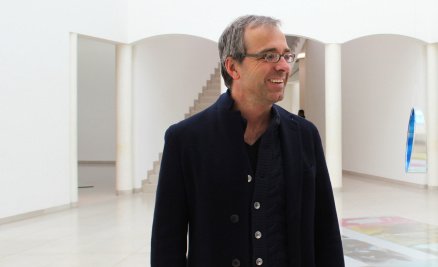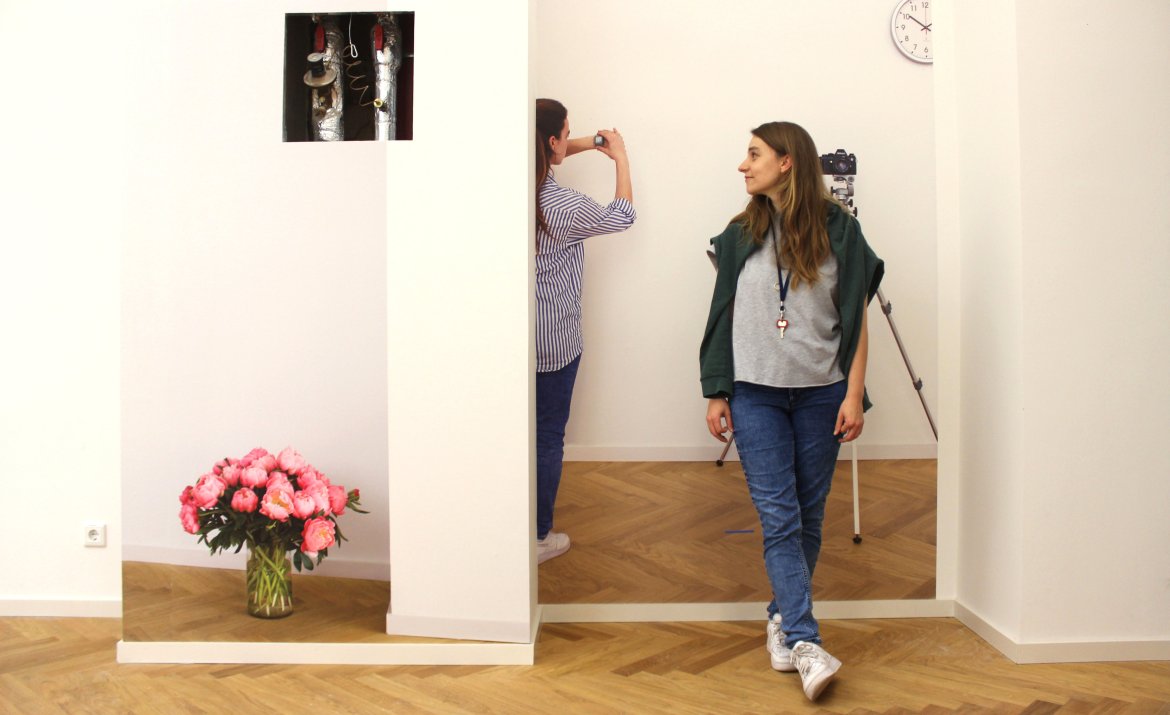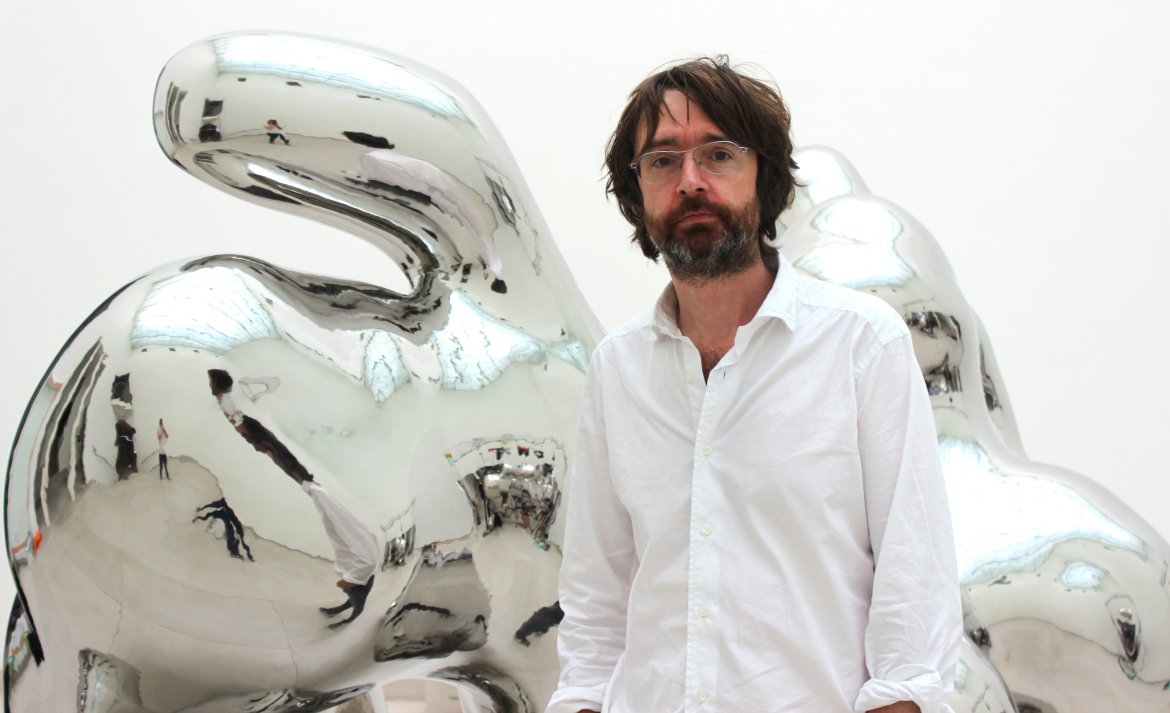Artist Interviews
RAY 2015 - IMAGINE REALITY Interview with David Claerbout
“Reality, for me is socially conformed madness.“ (David Claerbout)
The prelude to our interview series for RAY 2015 is done by the Belgian artist David Claerbout (born 1969, Kortijk, Belgium), who is working in the media of photography, video, sound, drawing and digital arts. His work is situated at the crossroads between photography and film.
In the interview he talks to us about two works, he will be showing in the exhibition IMAGINE REALITY – the work “Travel” and “Radio Piece (Hong Kong)”, which was co-produced by RAY 2015. The artist shared his thoughts about finding ideas and selecting the right media.

RAY:
You mostly work as a video artist. Which significance/meaning does the medium of photography have in your practice?
DC:
I grew up as a painter long before I took up photography. Cinema and photography came later and cinema is not my world at all. I think cinema is an ideology and I refuse ideologies as much as possible. In a library or in a bookshop they still ask in which section my books should be included – among filmmakers, artists or photographers? I guess my works are a kind of photography impregnated with a sense of painting.
I’m always trying to repeat that our relation to photography is disappearing forever. We are looking at the image but that image has a certain origin in the camera. It’s about the relation of the lens and subject; this relation is disappearing. People do not trust their eyes any more. Photography is and was always manipulation.
The end line will be, that we will no longer perceive what’s happening in front of us, but we will perceive ideas. When we have no more power to perceive the reality we are very commercial and then the real estate in our head can be commercialised. People will think, that they perceive, but they actually look with the same eyes that the mechanism wants them to. Someone or something is taking over our perception.
RAY:
Can you tell us about your new work “Radio Piece”, which has been commissioned for the exhibition IMAGINE REALITY?
DC:
The first concept of the work “Radio Piece” started five years ago. My ideas usually don’t survive at the beginning because I’m always very self-critical. The new work is actually a piece about space and especially about the availability of living space. I always knew that I wanted it to be set in Hong Kong, because Hong Kong can be looked at as the definition of an overloaded space, where living space is so expensive so that people live in – what we would say – inhumane conditions. Then I came across a documentary of the district Kowloon, which was at that time a kind of isolated legal system, where you could go in hiding and the police wouldn’t be able to follow you. That city was destroyed in the 1980s and replaced by the new Kowloon. Until then, the city was essentially full of houses – one atop of another. They built as high as they could go, until there was a real risk of collapsing.
The reason why I was interested in the idea of “less space” was because I had already made a piece about the space between the two ears in an almost ironic way. I made this connection of real space or real estate and the space between your two ears as a kind of metaphor.
This space between the two ears is still free, undiscovered and available to occupy. From there came the idea to work with headsets because when you wear a headset, you have the illusion to be in another place, but it is just the place between your two ears. This way “Radio Piece” became an audio-visual piece with an audio-chapter and a vision-chapter.


RAY:
How do you select the medium, or technique for your new piece? Why did you decide to use the “uninterrupted backtracking camera?
DC:
I wanted the vision-chapter in my work to look very coherent. And how much more coherent could it be then to put it in one single camera track without interruption and montage. So the idea grew up slowly – actually visually – to compose several places that don’t belong together, but are somehow united by a single camera movement. I´m not the first who has done that, it has been done very often. But it is the combination with the sound; the sound itself actually sounds coherent with the space that we see in the film.
The use of the binaural recording is a method of recording sound that uses two microphones, arranged with the intent to create a 3D stereo sound sensation for the listener of actually being in the room with another person. When you put on the headset you feel like you are in the space with another person. It´s like mixing two worlds with each other – it’s an illusion world. So footsteps in that room come across as the footsteps in the real room you are sitting in. Actually, I was starting to play with the idea of mixing illusion sounds and real sounds in the exhibition together.
The essential story of the film is about two young men listening to a piece of experimental music with a lot of high and low pitches mixed together. Important in the film is the value of real estate, real space and especially mental space. The film is intended to confuse the viewer. It starts with a picture of a Zen Garden. As the camera zooms out, the picture of the garden turns out to be a poster on a wall inside a room; the two young men are sitting in front of it discussing the music. A little bit later it becomes that huge outside view of a Kowloon Building. At the end the viewer doesn´t now what he was actually watching and listening to.
The scene of the garden is rebuilt in 3D. It is a very accurate rebuilding because everything is the same as in the original – colour, structure, even the ear condition.
RAY:
Why is your new work called “Radio Piece”?
DC:
It actually started with a few inspirations. I had the vision in my mind of an Indian or Chinese or Bangladeshi low-wage worker in a shop listening to a radio, which is in the middle of the room. So the radio is disputing the sound in the space. I wanted to work with this situation; the idea was there but the production was a little bit complicated. There was 3D work, the replica of a room and live filming to do.
My work is meant to have a rupture. So in the middle of the film there is that person that puts his headset off and because it’s binaural sound playing on the headset of the viewer, it’s like someone is actually taking of his headset. Then the visitor is somehow liberated, the sound is completely gone, only pure silence. Simultaneously, the camera zooms out of the window into the city and away from the room. And there is a kind of uncanny silence for some minutes as you are sitting there and waiting for something to happen.


RAY:
In your work “Travel”, synthesizer sounds from a composition of stress-reducing therapeutic music accompanies the viewer through an idyllic forest pasture. Could you also tell us about this work, currently on show at the Museum Angewandte Kunst?
DC:
The idea for “Travel” goes back to 1996 before I was working with video. I was studying at the academy in Amsterdam and it was a little bit a difficult period because they had just announced to me that I couldn’t stay. Then I had an idea, while I was doing some work in a forest. At that time I collected kitsch music and elevator music, music that people use to relax and I got fascinated because they provoked images in my head – not only in my head, in general. They produce clear images in my mind of a deep and dark forest and a kind of relaxation that helps you fall asleep and feel safe. I was fascinated with the fact that these images in my mind where very real. Each time I was listening to these sounds I understood the music even though I didn’t like it too much. I was able to see by the images they produced clearly. I wanted to put these two things together, the predictable music and the predictable image – “Travel” is nothing more than that.
It’s a definition about space. You can’t recognize which forest exactly the film has been made in because it begins with a park and then transforms into a kind of European forest, and later into a large monumental forest and ends with the moment the music goes up. Here you wake up to realize that it’s just a shitty little forest in the middle of huge fields. It’s much smaller than it seemed. I think I was really always intrigued about how disappointment and pleasure can go together.
Usually when you watch films you usually get one message, at the end there is a certain resolution or end. But in my work you have a bigger feeling; you think that you have only seen the beginning of the action. I wanted to deliver big emotions, which at the same time make you doubt about what you have seen. So it is very simple in fact.

The reason why I hesitated so long to make it – exactly 17 years – was because I was a little bit afraid that people wouldn’t understand it, I thought they won’t understand why I used that kitsch music.
At one point I had some money but no ideas – usually that is a point where artists should stop. But I had this old idea in mind and I presented it to my team. I wanted to make it as an animation not as a film. I planned an illusionary place, that’s not specifically anywhere. So I travelled around Germany and visited forests that have been untouched by the human hand. Then we developed an animation that is based on photographs. Now it’s a forest that’s in everyone’s head.
RAY:
Does the work „Travel“ represent a utopian, idealised world, while „Radio Piece“ is rather a depiction of a dystopian future of urban life?
DC:
The landscape in “Travel” and the dystopian space in “Radio Piece” are a sort of identity passport of it. But what it is really about – the real identity of those works is about defining space. Do you not often have the feeling when you travel around the word that old Europe, as we know it, really still celebrates the sense of the quality of space? But when you go to Asia or Hong Kong, people are quite happy with living in a definition of space that for us would be completely intolerable.
And what you have is a mixed idea of the quality of living space. Both of these works are about that. They are about things that look coherent but we maybe do not speak about the same thing when we are watching something. My works are complete mental spaces, they don’t exist, but they give you that illusion.
RAY:
„Travel“ is based on an idea you had in 1996, but you didn’t have the technical possibility to realize the project until recently. Which new possibilities do digital processes offer for photography? What standing does analogue photography have for you today?
DC:
I’m for analogue ideas. It is a very amazing confused world because digital processes, on the one hand, bring opportunities and, on the other hand, takes them away. In the middle of that you have artists who refuse to work digitally; they do not realise that the analogue interface is just another interface.
RAY:
In how far is your work “Radio Piece” and “Travel” part of an “imagined reality”? What does it mean for you to imagine a reality?
DC:
What is reality? Is it the “I woke up in the morning” reality thing? I think it’s everything in the universe we know and that we can speak about; also social orders are reality. But you could also hold this microphone in front of a dog and ask him this question. Reality, for me is socially conformed madness.
© RAY 2015 Fotografieprojekte Frankfurt/RheinMain, www.ray2015.de, www.mmk-notes.com

